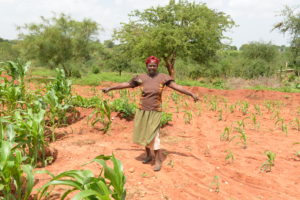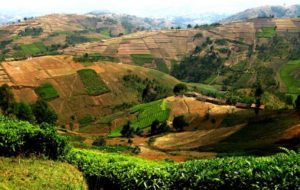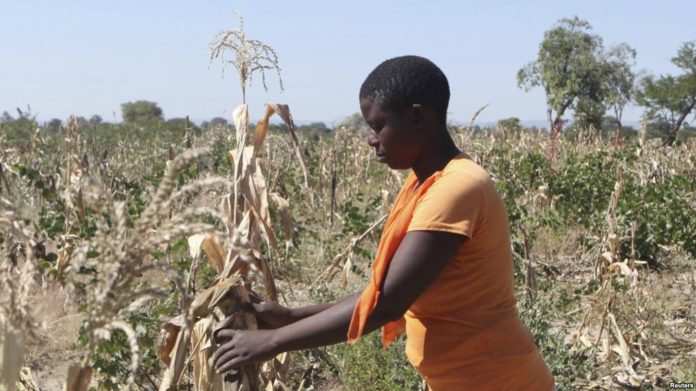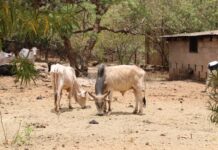|
Getting your Trinity Audio player ready...
|
By Sam Otieno
The African continent is still grappling with shocks of climate change including erratic weather patterns, increasing droughts, extreme rain, and floods that have negatively imposed a huge burden on the socio-economic transformation and livelihoods of people.
However, through harnessing the acceleration of environmentally-sound technologies for low carbon emissions and climate-resilient development plan at the request of developing countries could help the developing countries to mitigate, adapt and be resilient to the impacts of climate change.
Tony Simons, Director General of the World Agroforestry Center (ICRAF) said that the most recent report of the Intergovernmental Panel on Climate Change (IPCC) emphasized that Africa will be the continent most affected by climate change. He said this during the Africa Regional Forum on Climate Technology Centre and Network (CTCN) held in Nairobi.
 Simons noted that Africa had already seen significant increases in temperature, particularly in the Sahel and parts of Southern Africa, with accompanying droughts. The continent is expected to experience further dramatic decreases in precipitation, declining by more than 20 percent compared to 20 years ago. More frequent and intense tropical storms, with parts of Africa, set to experience a 20 percent increase in cyclones.
Simons noted that Africa had already seen significant increases in temperature, particularly in the Sahel and parts of Southern Africa, with accompanying droughts. The continent is expected to experience further dramatic decreases in precipitation, declining by more than 20 percent compared to 20 years ago. More frequent and intense tropical storms, with parts of Africa, set to experience a 20 percent increase in cyclones.
“Between 75 and 250 million people are expected to be exposed to water shortages in the next 10 years, and as many as 1.8 billion by the end of this century. Cape Town is already experiencing a critical shortage. Agriculture fed by rain could drop to 50 percent in some African countries by 2020. The Intergovernmental Panel report predicts that wheat may disappear from Africa by 2080 and that maize production will fall significantly in Southern Africa,” added Simons.
He also noted that arid and semi-arid lands are likely to increase by up to 8 percent with severe impact on livelihoods and the environment. Globally, climate change is the single-most critical issue of our time and a paradigm shift of implementing technologies to mitigate, increase adaptation and create resilience.
“Most African countries have chosen clean energy technologies as a part of their environmental solutions. ICRAF supports these efforts through its work in developing cleaner options for woody biomass-based energy, a key technology used across the continent,” said Simons.
However, Simons called for equal participation of men and women in matters regarding climate change because, in all communities, knowledge of agricultural and natural resource management differs by gender, thus, it is essential to have both genders involved in addressing climate change at the farm level.
According to Jukka Uosukainen director of CTCN said there is need to create a bridge between developing countries’ technology needs and the proven expertise of finance. \Its important to include the private sector and research experts from around the world.
He explained, ‘technology’ isn’t just ‘high’ but also ‘low’, that is, sustainable agroforestry systems are as viable a technology in the right contexts as mobile phone apps that provide micro-credit for farmers to allow them to diversify their farms.

Jukka said some of the activities in Africa that CTCN has implemented include supporting ‘green’ technology deployment in industrial zones in Senegal; formulating geothermal energy policy and legal and regulatory frameworks in Uganda; facilitating financing to address increasing water scarcity in Namibia; a study on refuse-derived fuel for cement factories in Mozambique; identification of climate-adaptation technologies for rural communities in Mali; and increasing the scale of sustainable wood fuel production in Tanzania through the World Agroforestry Centre, a CTCN partner.
Ligia Noronha, Director Economy Division, UN Environment said the region should address technology gaps then create enabling environment to tackle climate change through building capacity, providing finance for the relevant technologies and also raise awareness and provide information on the impacts of climate change to the people.
“The moment is now and combating climate change requires multi-calculated efforts globally like integrated thinking and innovative solutions,” she said.
Charles Mutai, Director of Climate Change in the Ministry of Environment and Forestry, Kenya said technology development and transfer is an integral element to address climate change actions. Technology cooperation, therefore, can help both developed and developing countries reduce the cost of tackling climate change, while also stimulating opportunities for sustainable development.
“For example, innovative technologies are key to flood management, crop resilience, erosion protection and early warning. They are also key to bring Africa ahead in the path to decarbonization,” added Mutai.
Nonetheless, finance and technology need to go hand in hand. Technology development and deployment is not possible without financing. Finance enables the development, demonstrate, transfer, deployment, and diffusion of climate technologies.
Collaboration is key among a diverse range of stakeholders, including bilateral cooperation agencies, development banks, international funds and other funding mechanisms to facilitate the financing of technologies in developing countries.














